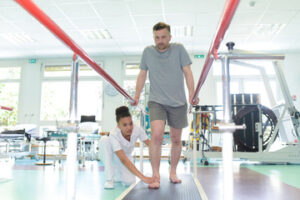Clean gutters enhance the look of your property. They help rainwater channel away from bricks, stone, and wood. This reduces the risk of water damage and brown unsightly staining on walls.

Clogged gutters can lead to mold which can contaminate the interior of the home and pose health risks. Regular cleaning prevents clogs and allows water to flow through the downpipe.
Clean gutters are essential to the health and protection of your home. They allow rainwater to flow away from your roof, fascia, soffits, foundation and landscaping, preventing damage to these areas. Clogged gutters, on the other hand, can cause water to overflow, resulting in expensive and destructive damage. To prevent this, it’s important to clean your gutters at least twice a year — in the spring and fall. If you don’t want to tackle this job yourself, you can hire a professional gutter cleaning company for an affordable price.
Before you begin, survey the area and make sure that no trees or power lines are nearby. It’s also recommended that you have a partner to assist you with the cleaning process, as this can be a dangerous task and falls are the leading cause of injury in this type of work. Once you’re ready to start, set up a ladder that’s tall enough for you to reach your gutters. It’s best to start at one corner and work your way toward the middle to avoid pushing debris into your downspouts.
Begin by using a scoop, your hands or a brush to remove any large pieces of debris. Once all the big stuff is gone, you can begin to use a hose to flush out your gutters. Make sure that you’re working in a well-ventilated area and wear rubber gloves for your safety. If the grime and mildew are particularly stubborn, you may need a scrubbing brush.
Once the rinsing is finished, it’s time to inspect your gutters for leaks and other damage. If there are any gaps or cracks, you can use caulk to seal them up. You can also install gutter guards to keep leaves and twigs from blocking your gutters, as well as gutter foam inserts for additional insulation.
A final step is to rake up the debris from your yard and dispose of it in garbage bags or a compost bin. If you want your gutters to last longer, you can also add downspout covers and heat cables to prevent ice dams in cold climates.
Ladders
Climbing ladders to clean your gutters isn’t the safest job and is likely to lead to injuries. It’s also a messy job that could damage the roof and other parts of your home. Professional gutter cleaners have the skills, equipment and safety procedures to clean your gutters safely.
They use a ladder that can support their weight and work on the roof to eliminate clogs and wash away debris. They also have special tools that make the job faster and easier. For example, a gutter scoop is handy for removing large quantities of leaves and debris.
A gutter cleaning kit typically includes a gutter scoop, a bucket and heavy-duty work gloves. It’s important to follow ladder safety rules, including keeping your body centered between the side rails and working on level ground. It’s also a good idea to keep an eye out for slippery surfaces and obstacles such as tree branches or power lines that could fall on you.
Gutter cleaning can be dangerous, even for professionals. There’s always a risk of falling off the ladder or becoming tangled in the leaves and other debris. In addition, if you’re teetering on the top of a ladder and don’t have a partner to hold it, you may fall off.
Ladders are often made of fiberglass, which is vulnerable to scratching and corrosion. Keeping your ladder clean will protect it from damage and extend its life. There are many ways to clean a fiberglass ladder, but it’s important to follow the manufacturer’s instructions carefully. Before you begin cleaning, it’s a good idea to pre-rinse the ladder and place it in a well-ventilated area where water runoff won’t cause damage.
You can remove most ladder stains with baking soda and vinegar. For more stubborn marks, you can use a commercial fiberglass cleaner. Follow the manufacturer’s instructions to apply the cleaner and scrub it gently. After scrubbing, rinse the ladder thoroughly with a garden hose to remove all chemical residue. Allow the ladder to dry completely before using it again. It’s also a good idea periodically to re-lubricate the moving metal parts of your ladder with oil.
Scrub Brushes
A gutter system protects the roof, siding, and foundation of a home from water damage. However, the horizontal gutter troughs are prone to collecting dirt, animal feces, leaves, sticks, and other debris that can cause them to clog. Keeping the gutters clean and free of clogs is an essential part of maintaining a safe, comfortable home environment.
To get started with your gutter cleaning, you will need a ladder and some protective gear. A pair of gloves and safety glasses will help keep your hands and eyes protected from debris, dirt, and chemicals. A dust mask may also be useful to keep contaminants from irritating your respiratory system. You will also need a bucket to mix the cleaning solution, a garden hose with spray nozzle attachment, and a scrub brush to scrub away stubborn debris.
Before beginning to clean, you should remove the gutter guards from the gutters and place them on a tarp. This will ensure that they don’t fall off during the cleaning process. Next, you will need to clear out the gutters using a hand trowel or a gutter scoop and then use a scrub brush to scrub away any dirt or grime that remains. Once the gutters are clean, you will need to empty them using a downspout auger or a hose with a high-pressure nozzle attachment.
Lastly, you will need to inspect the gutters for any signs of clogs or leaks and make necessary repairs. It’s important to take your time and be thorough, as gutters that aren’t cleaned regularly can become damaged by water, insects, or birds. Once you’re finished with your gutter cleaning, you can put the gutter guards back in place and enjoy a safer, cleaner home environment.
Gutter sense cleaning tools are an excellent alternative to a ladder for homeowners who want to maintain their home’s gutter system without having to climb up on the roof. The gutter cleaning tool is attached to a telescopic extension pole and operated by pulling on a rope or handle. The tongs of the tool can grasp leaves, twigs, and other debris from above the gutters, making this method of cleaning ideal for properties with many trees.
Water
Gutter cleaning is a task that often requires water. The water helps to dislodge and wash away the debris that is being removed. It also helps to rinse away any chemicals that may be used during the gutter cleaning process. It is important to use water carefully, especially when cleaning the gutters of a high-rise building. If the water gets into the walls of the building, it can cause damage to the structure. It is also important to ensure that the water is not directed towards any plants or shrubs that could be damaged by it.
To clean the gutters with water, you will need a hose and a ladder. Make sure to follow ladder safety protocols and be careful when climbing on the ladder. The hose can help to wash away larger pieces of debris and may be useful in helping to clear out downspouts that are blocked by leaves or other debris. It is also a good idea to wear rubber-soled shoes when using a ladder as this will give you the best grip on the rungs or steps.
Once all the visible debris has been removed from the gutters, it is important to inspect them for any remaining particles that are not obvious to the naked eye. It is also important to check for any signs of water damage that may have occurred during the cleaning process. After completing the inspection, it is important to clean up any debris or dirt on the ground around the gutters. This will prevent stains and help to maintain the curb appeal of the property.
The primary function of the gutter is to direct rainwater away from a home or business, thereby protecting it from water damage. However, if the gutter becomes clogged, it can prevent rainwater from flowing away from the property and can result in foundation damage or flooding of basements and crawl spaces. Regular gutter cleaning can help to protect the property from water damage and should be undertaken at least twice a year. However, the exact frequency depends on the environment and the type of foliage surrounding the property.
